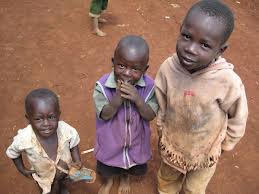At least two million children aged five to 17 are engaged in child labour, the first Child Labour report released by the Uganda Bureau of Statistics (UBOS) reveals.
The report, unveiled recently at Statistics House in Kampala, reveals that the two million child labourers accounted for 16% of the entire children's population of 11.5 million in Uganda.
According to the report, child labour is among the major causes of child abuse and exploitation.
The report further faults child labour for slowing down broader national poverty reduction and development efforts.
It also points to child labour as an obstacle to achieving universal primary education.
"Children who are forced out of school to help supplement their families' incomes are denied the opportunity to acquire the necessary knowledge and skills to aid them get decent employment in future.
This ties them down in a cycle of poverty," the report reads
The report defines child labour as work that is mentally, physically, socially and morally harmful to children.
It further includes work activities that interfere with children's school attendance.
To that end, child labour is when children aged five to 11 years are engaged in work, while children aged from12 to 13 years work beyond 14 hours a week and when children aged between 14 and 17 years work at night or for more than 43 hours a week.
Of the child workers, 52.5% were males while 47.5 were female.
The report further stated that one in every four working children (26%) carried heavy loads at their respective workplaces.
While presenting the report, Wilson Nyegenye, a principal statistician, at UBOS said children in the rural areas were engaged in child labour more than their urban compatriots.
"Most of the activities that employ child labour, such as agriculture, are in the rural areas," Nyegenye said. About 42% of children in the rural areas were in employment, compared to the 17% in urban areas.
At least 51% of the children in the central region and 40% in the western region were in employment indicating that the two regions had the highest level of child employment.
Addressing the media on the report, Andrew Mukulu, the director, population and social statistics said: "Overall, children with both parents dead were more involved in employment than their counterparts in other orphanhood statuses."
Most of the child labour, Mukulu noted was employed in primary sector encompassing agriculture, forestry and fishing.
This sector accounts for 93% of the child labour in Uganda.
Kampala city emerged as the most notorious employer of child labour with 79% of city's child workers engaged in the services industry.
Household chores, the study noted, also formed an integral part of the daily work of a Ugandan child with 65% of children engaged household chores.
However, girls were more likely to perform household chores than boys and more children in rural areas undertook household chores (66%) than their urban peers (58%).
According to Godfrey Nabonyo, the manager communications and public relations UBOS, the report is informed by the National Labour Force and Child Activities Survey 2013, the first national survey of its kind in Uganda.

